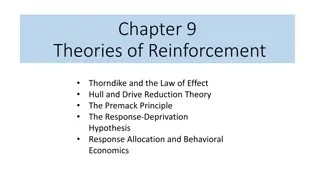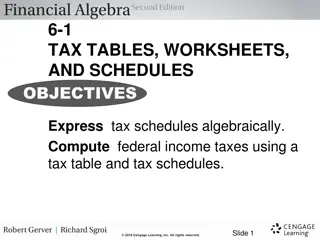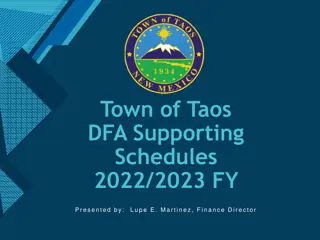Understanding Schedules of Reinforcement
Different schedules of reinforcement, including fixed ratio, fixed interval, variable ratio, and variable interval, are explained through relatable scenarios like buying lottery tickets, taking breaks, and receiving allowances. By identifying these reinforcement schedules, individuals can better understand behavioral patterns in various contexts.
Download Presentation

Please find below an Image/Link to download the presentation.
The content on the website is provided AS IS for your information and personal use only. It may not be sold, licensed, or shared on other websites without obtaining consent from the author. Download presentation by click this link. If you encounter any issues during the download, it is possible that the publisher has removed the file from their server.
E N D
Presentation Transcript
Schedules of Reinforcement Directions: Read each of the following statements presented and determine which partial schedule of reinforcement is explained (fixed interval, fixed ratio, variable interval, variable ratio).
Schedules of Reinforcement Fixed (same) Variable (changing) After an unpredictable number; a changing number Every so many; a set number Ratio (action) Every so often; a fixed amount of time Unpredictably often; a changing amount of time Interval (time)
Schedules of Reinforcement A. Fixed Ratio C. Fixed Interval B. Variable Ratio D. Variable Interval 1. Buying scratch-off lottery tickets and sometimes winning. VR 2. A hotel maid may take a 15-minute break after cleaning 10 rooms. FR 3. Receiving an allowance every Sunday. FI 4. Checking the front porch for a newspaper when the deliverer is extremely unpredictable. VI 5. Checking the oven to see if chocolate chip cookies are done, when baking time is known. FI
Schedules of Reinforcement A. Fixed Ratio C. Fixed Interval B. Variable Ratio D. Variable Interval 6. A blueberry picker receives $1 after filling three pint boxes. FR 7. A charitable organization makes an average of 10 phone calls for every donation it receives. VR VI 8. Repeatedly calling a garage mechanic to see if your car is fixed yet. 9. A student s final grade improves one level for every three book reviews submitted. FR 10. A professional baseball player gets a hit approximately every third time at bat VR

















































